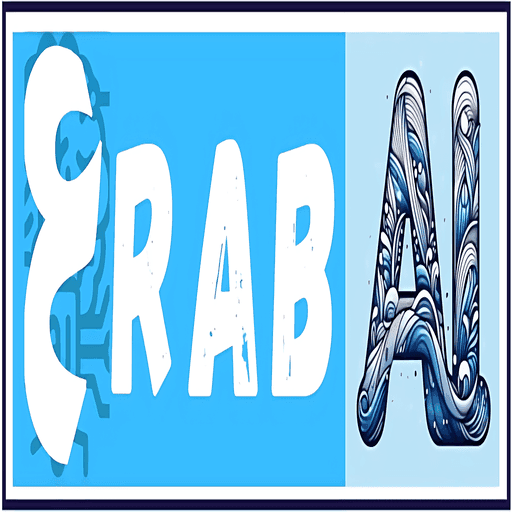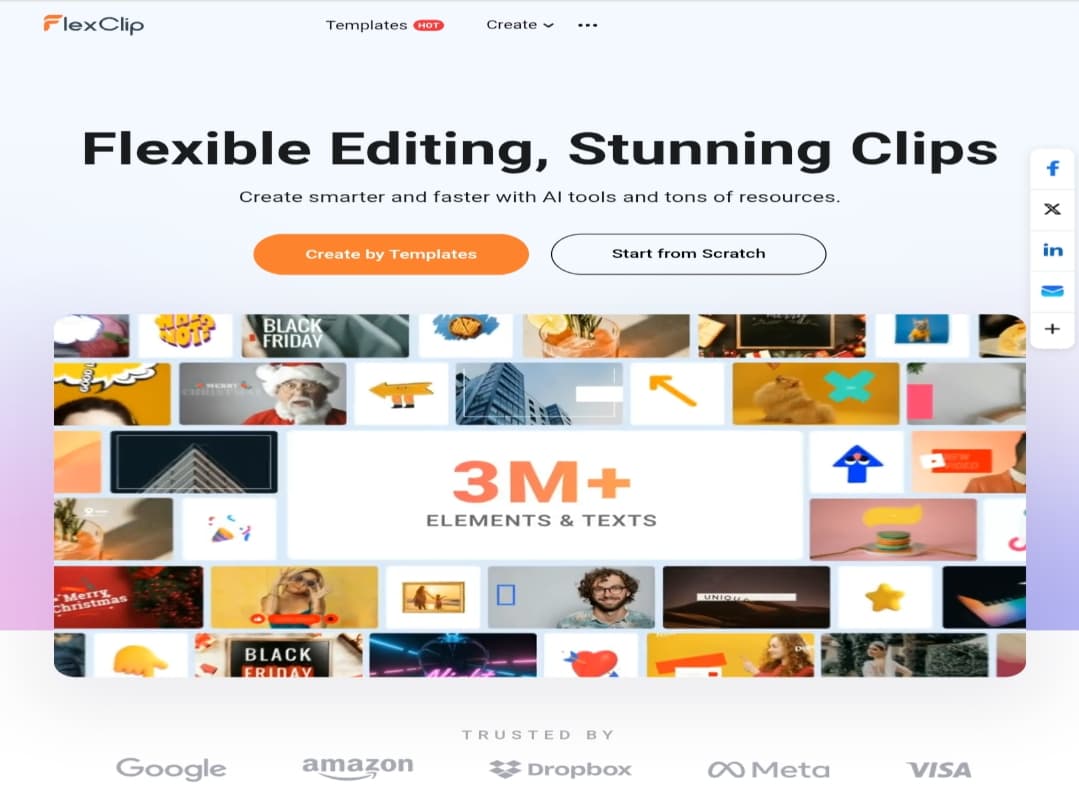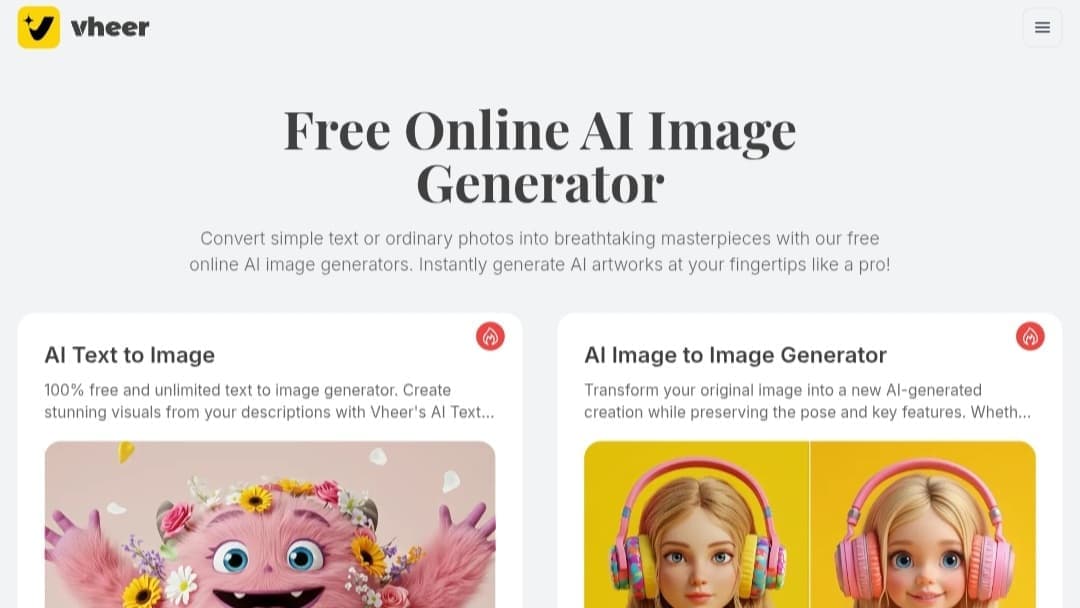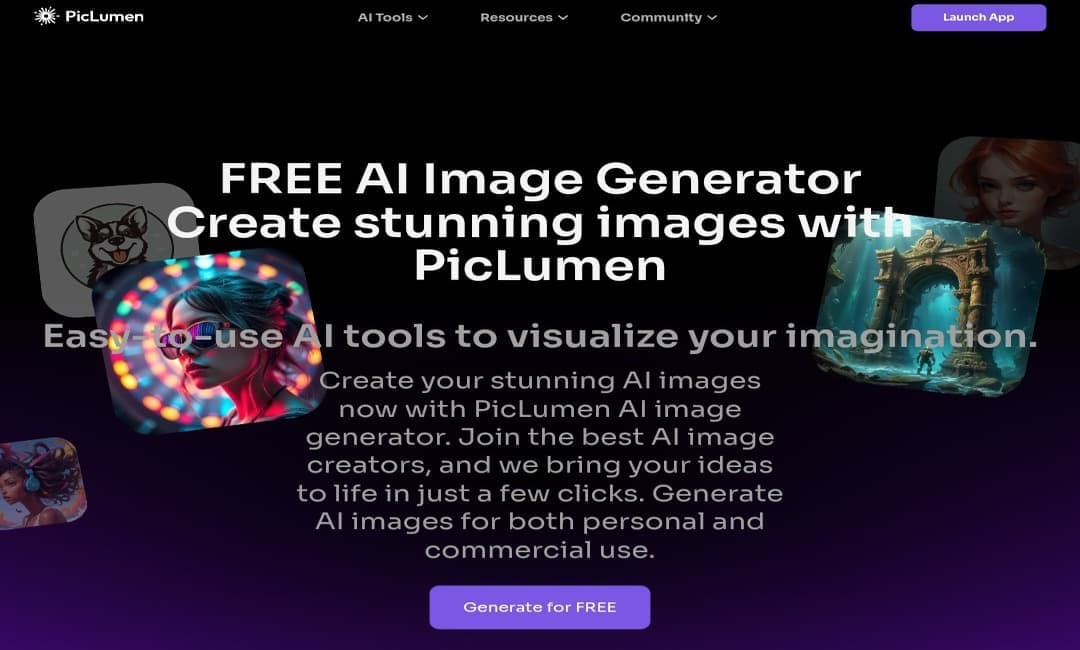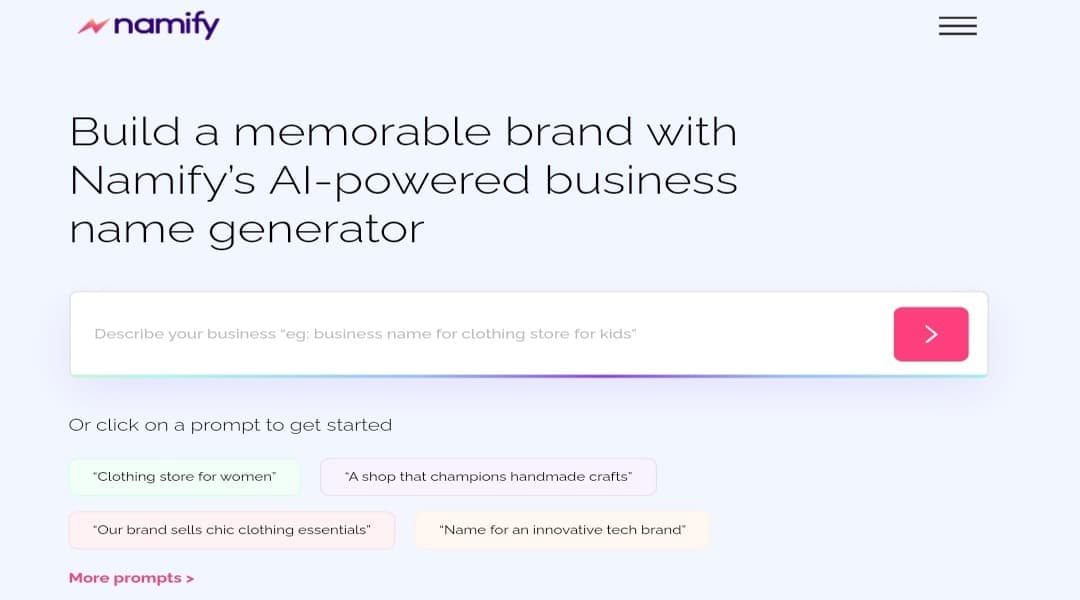
Tensor Art: Free AI Image & Video | Run ComfyUI & Train Models
What is Tensor Art?
Tensor Art is a platform that combines numerous AI tools for creating images and videos from text or input images.
This is in addition to many tools such as background removal, image quality enhancement, object removal from images, face swapping, and more.
Key Features of the Platform
1. Text-to-Image Generation
Convert text descriptions into high-quality artistic images with resolutions up to 4K.
– Choose from over 100+ artistic styles such as:
– Realism (images resembling photographs).
– Animation (colorful cartoons).
– Abstract Styles (modern art with bold colors).
– Easily adjust dimensions to fit the content (square, horizontal, vertical).

2. AI Image Editing
– Add new elements: Insert objects or characters into images via text commands (e.g., “add a white cat next to the tree”).
– Transform backgrounds: Change the image background to a natural scene or a living room using simple descriptions.
– Enhance quality: Upscale old or blurry images to 4K resolution without losing details.
3. Text-to-Video Creation
– Write a text description (e.g., “a girl running in a forest with leaves falling around her”), and convert it into a 10-60 second video.
– Choose motion style: Select video speed and the nature of transitions between scenes (smooth or fast).
– Add music or sound effects from the platform’s free library.
4. Image-to-Video Conversion
– Upload a static image and convert it into an animated video using text commands (e.g., “make the flowers in the image bloom slowly”).
– Use smart tracking technology to add realistic motion to image elements (like animating hair in a portrait).
5. Free Model Training on Tensor.Art
Tensor.Art provides an open environment that allows users to upload their own models or use available models on the platform at no cost.
The platform supports a wide range of models, including Checkpoint, Embedding, ControlNet, LoRA, Pony, LoCon, and LyCORI.
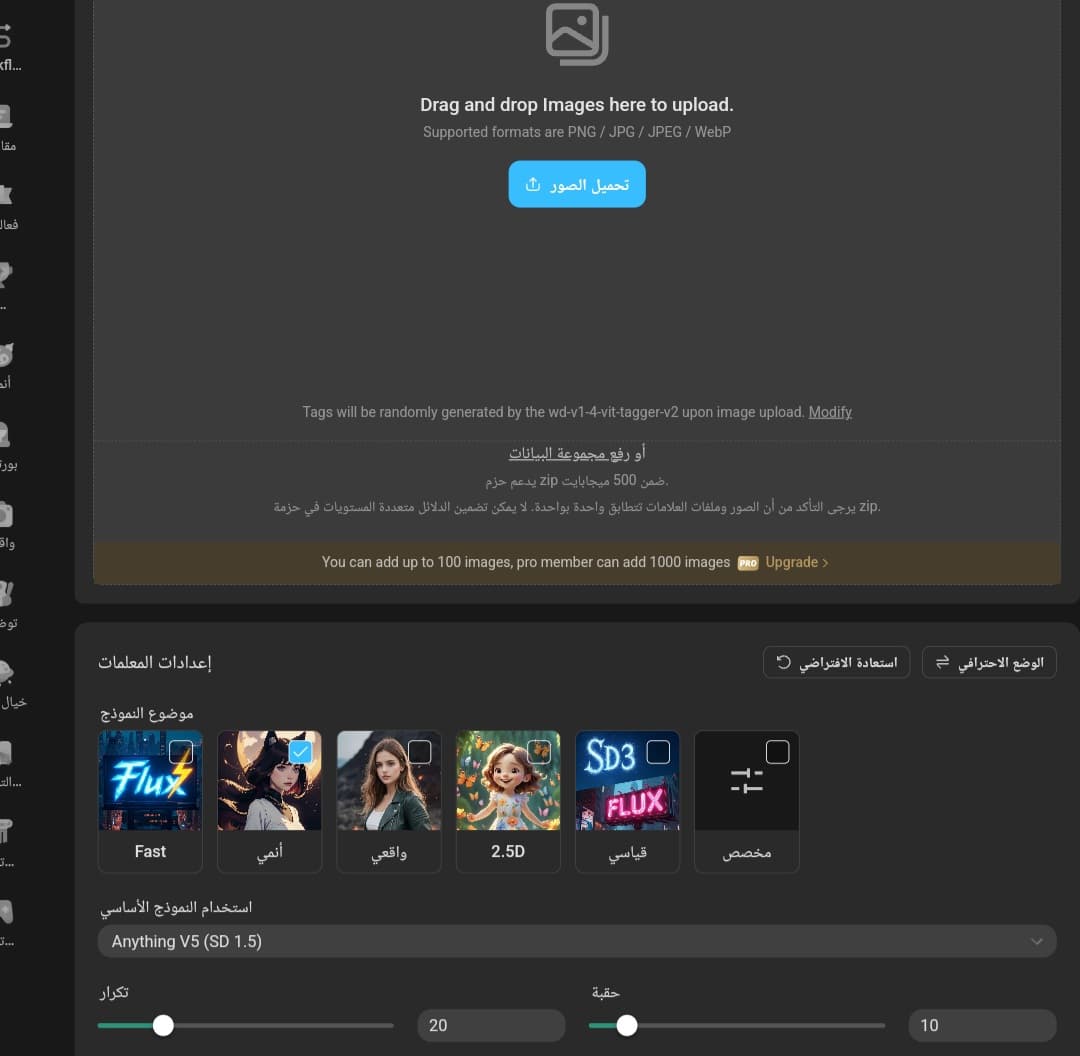
To start the process, click the “Train” button, and upload a set of up to 100 images or data not exceeding 500MB, noting that it supports compressed files (zip).
As for “Pro” subscribers, they can upload up to 1000 images.
6. ComfyFlow Feature on Tensor.Art – Full Control over AI Image Creation
Tensor.Art offers the ComfyFlow feature, which is based on ComfyUI.
It is a tool that gives you complete freedom in designing AI images.
Instead of relying on pre-set configurations, you can customize every step in the generation process, whether through text-to-image conversion, modifying specific parts of an image (Inpainting), or combining multiple images (Area Composition).

The remarkable feature of ComfyUI is that it gives you complete control over details, such as adjusting colors, changing backgrounds, or enhancing image quality.
Select “ComfyFlow,” click on “New Workflow,” and choose the target model to try it out.
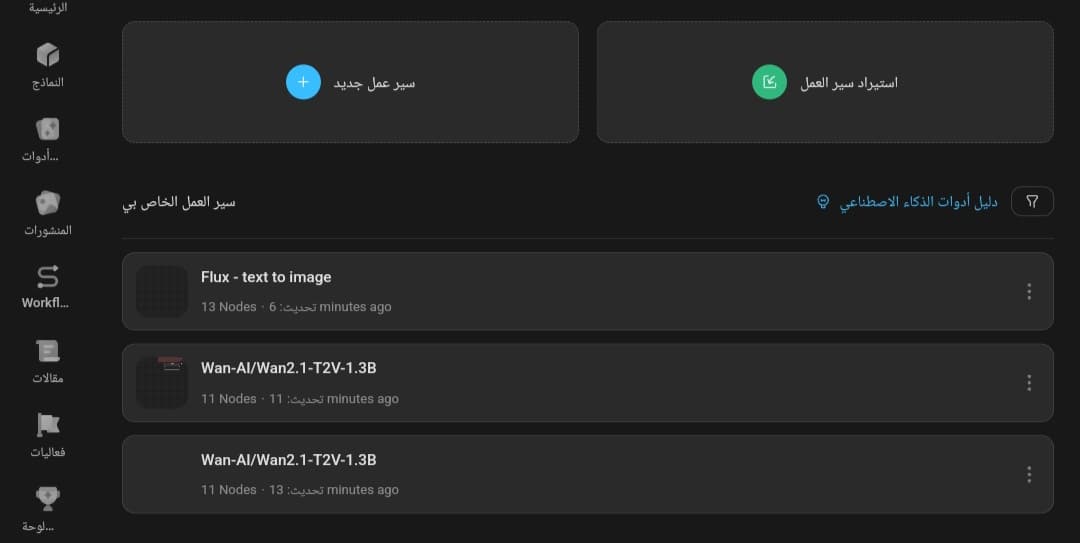
7. Multi-language Support
– Create content in 30+ languages, with high accuracy in voice translation for videos.
– You can also choose to use local dialects (such as Egyptian or Gulf Arabic) to achieve results suitable for the target audience.
Steps to Create Images and Videos
Log in to the platform via Google or email.
You can change the platform’s language to Arabic by clicking on the main menu at the top right, then changing the language from the settings.
Creating an Image from Text (Text-to-Image)
(1) Click on “Create,” then go to the “Image Generation” section and write a detailed description (e.g., “sunset view on a beach with palm trees”).
(2) Choose the artistic style (realistic, cartoon, etc.) and image dimensions.
(3) Press “Generate” and download the final image after 20-30 seconds.
For example, I chose the Kolors model by Kling AI, as shown in the following image.
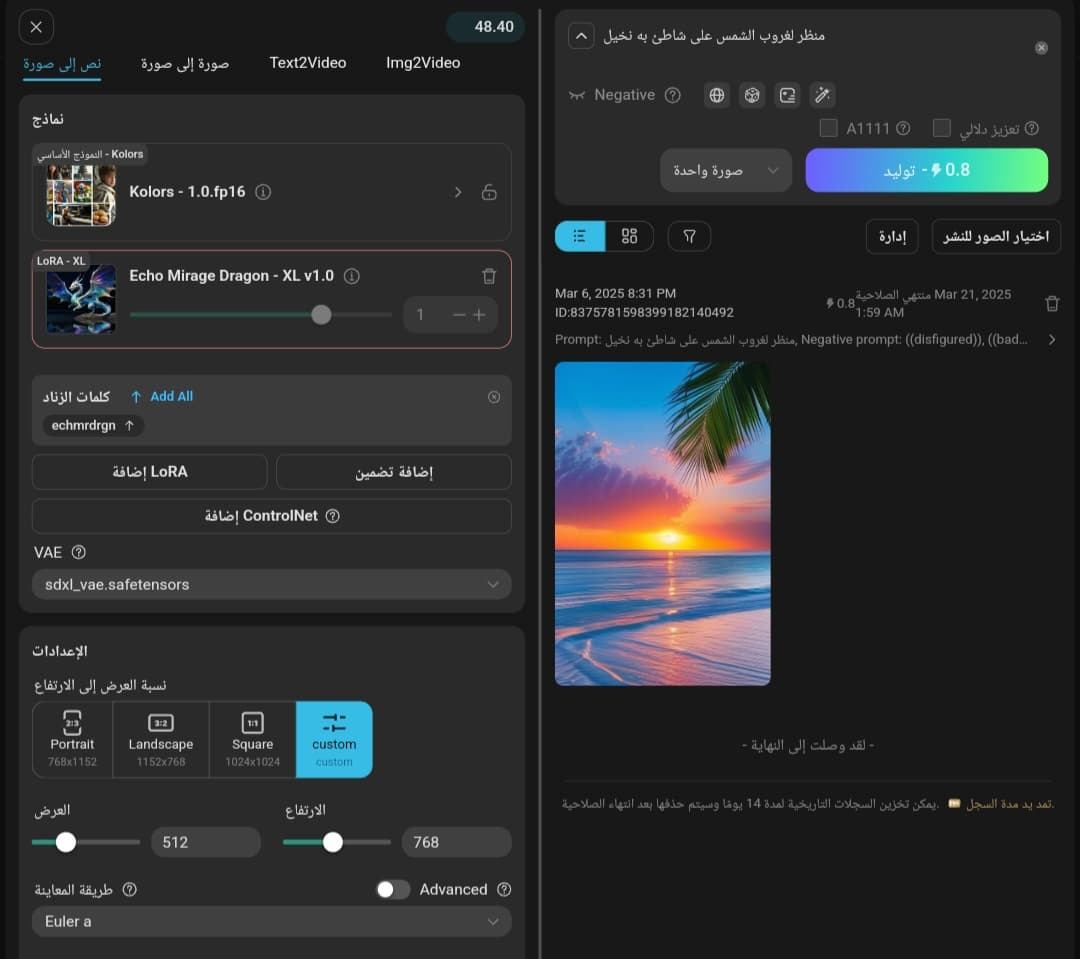
Converting an Image to Video (Image-to-Video)
(1) Upload the image from your device or choose one from the platform’s library.
(2) Write text commands for the desired motion (e.g., “make the waves move from left to right”).
(3) Set the video duration (up to 60 seconds) and adjust the motion speed.
(4) Add sound effects if desired, then click “Convert.”
To use other tools, you can access them from the menu by selecting “AI tools.”
How Can You Benefit from Tensor.Art?
For Designers and Artists:
– Create digital art paintings from abstract ideas in minutes.
– Develop quick initial designs for presentations or clients.
For Marketers:
Design attractive product images for Instagram or Facebook ads.
Produce short videos to explain product features without filming costs.
For Bloggers and Content Creators:
Convert your text articles into visual explanation videos to attract more followers.
Create custom images to use as attractive blog post headers.
For Educational Institutions:
Develop visual educational materials (infographics, explanatory videos).
Transform text lessons into interactive content using animated images.
Frequently Asked Questions (FAQ)
1. Can I use the images and videos commercially?
Yes, as long as you adhere to the terms of use and do not infringe on the rights of the models used. Also, no watermark is added when downloading the results.
2. How can I ensure color accuracy in the generated images?
Write detailed descriptions of colors (e.g., “light blue sky with white clouds tinged with gray”).
3. Can I edit the video after it’s created?
Yes, basic cutting and effects tools are available in the Pro version.
4. What is the processing time for requests?
– Images: 20-40 seconds.
– Videos: 2-5 minutes depending on complexity.
5. Is the site free?
Yes, it gives you 50 credits daily. The consumption for creating a single image or video varies depending on the model used and video duration. You can also purchase additional credits or subscribe to paid plans.
6. What is the difference between daily and monthly credits?
Daily credits (50) are renewed every 24 hours, and unused ones accumulate up to 150 credits.
7. Does the platform support Arabic in text prompts?
Yes, but results are more accurate when using English.
8. Can I use Tensor Art on my phone?
Certainly, the platform is compatible with mobile phones as well as computers.
